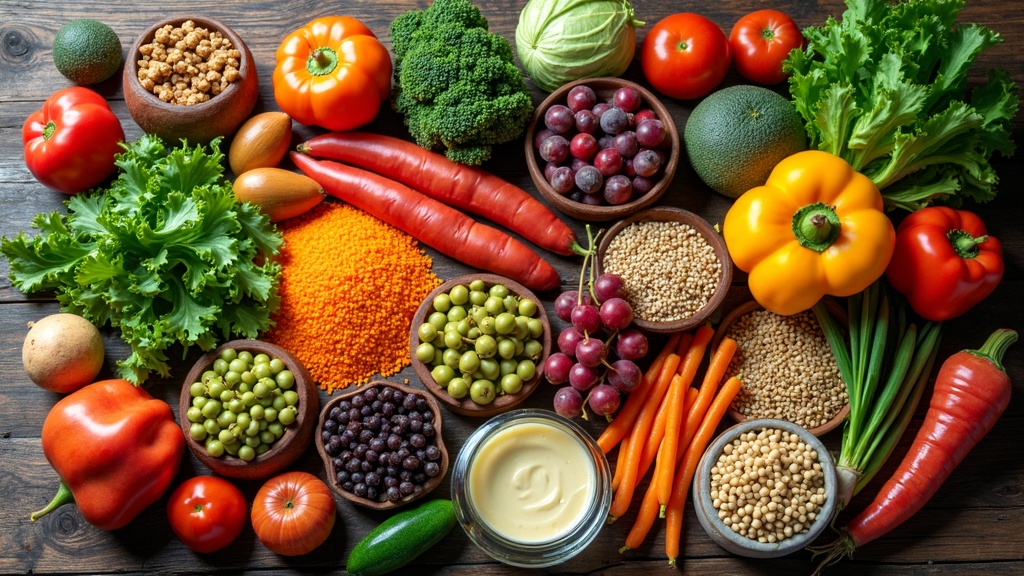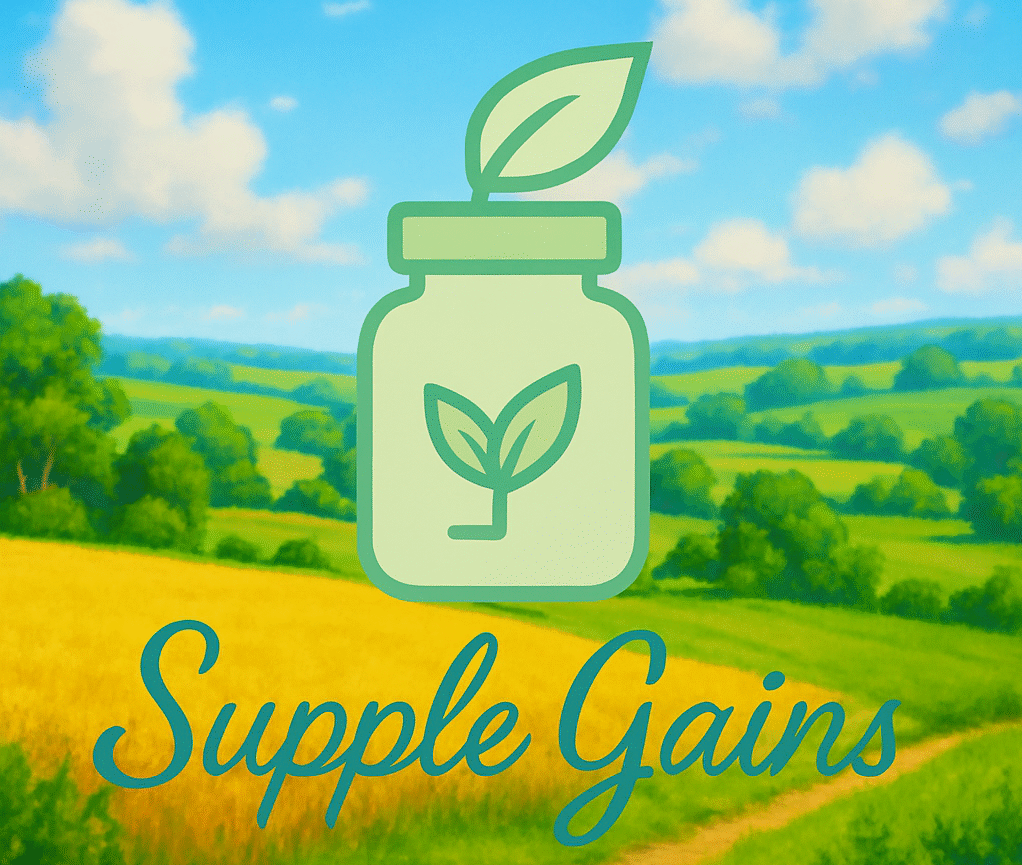Plantbased diets are really gaining momentum lately, and there’s a good reason for that, especially when it comes to keeping blood sugar in check and lowering the risk of diabetes.
Swapping animalbased foods for more plant foods isn’t just about going vegan or vegetarian.
Sometimes it’s simply about adding more plants to the plate and seeing how it changes the game for health.
I’m going to walk through how plantbased eating can help with diabetes prevention, plus some tips to make it easy and tasty.

How Plantbased Diets Support Blood Sugar Control
Eating mostly plants does a lot more than help people feel full with fewer calories.
Fiber, which you’ll find in beans, lentils, vegetables, whole grains, nuts, and seeds, slows down the absorption of sugar in the bloodstream.
That means blood glucose levels spike less often.
Plus, plantbased foods are loaded with vitamins, minerals, and all kinds of antioxidants, which can help the body process sugar better and reduce inflammation.
Plenty of studies have shown that people who stick to plantbased diets often have lower risks for type 2 diabetes.
According to the National Institutes of Health, eating a plantrich diet lowers insulin resistance and makes it easier for the body’s cells to use glucose.
This all means less wear and tear on the pancreas, and fewer wild blood sugar swings over time.
The Basics: What Makes a Diet Plantbased?
Going plantbased can look a little different for everyone.
For some, it means going fullon vegan (no animal products at all).
For others, it might be vegetarian (no meat, but still eating eggs or dairy), or even flexitarian, which is mostly plant foods with the occasional portion of meat or fish.
The focus stays on foods like:
- Nonstarchy Vegetables: greens, peppers, broccoli, cauliflower, and zucchini.
- Legumes: lentils, black beans, chickpeas, and peas bring protein and fiber.
- Whole Grains: brown rice, quinoa, farro, bulgur, and oats.
- Fruits: berries, apples, pears, and citrus fruits pack fiber and flavor.
- Nuts and Seeds: almonds, walnuts, chia seeds, and flaxseeds supply healthy fats and minerals.
I’ve found that planning meals around these foods fills me up and helps me avoid that sluggish feeling after eating.
These meals provide steady energy, which is pretty important for keeping blood sugar stable throughout the day.
Quick Guide to Starting a Plantbased Diet for Blood Sugar Health
Building better habits around food makes starting out a whole lot less overwhelming.
Here’s a list I use when helping people switch up to eating more plants, especially if diabetes risk is a concern:
- Swap Refined Grains for Whole Grains: Switch out white bread or rice for whole wheat breads, brown rice, or quinoa for more fiber and nutrients.
- Add Beans or Lentils: Try adding a scoop of beans to salads, soups, or tacos. They’re super cheap, filling, and great for blood sugar.
- Choose Whole Fruits Over Juice: Whole fruits pack more fiber and are digested slower than juice, keeping sugar spikes in check.
- Snack Smart: Aim for nuts, seeds, or veggie sticks instead of chips or sweets. These help control hunger and steady blood glucose.
- Plan Ahead: Prepping a few meals or snacks means you won’t fall into the trap of grabbing convenient but notsohealthy options.
Makes a big difference when you plan for small wins instead of trying to flip your menu in one day.
Common Challenges When Switching to Plantbased Eating
Going plantbased sounds simple enough, but anyone who’s ever walked through it knows there are a few hurdles.
Here are some real life roadblocks I’ve seen (and lived through), along with practical tips for each one:
- Getting Enough Protein: Plenty of plants are packed with protein. Lentils, beans, tofu, tempeh, nuts, and seeds are some easy goto options. Mixing them up throughout the week covers all the bases.
- Missing Familiar Foods: Sometimes, cravings hit for comfort foods like burgers or pizza. There are awesome plantbased options and swaps (like black bean burgers and cauliflower crust pizza), but it can help to try new recipes and keep mealtimes interesting.
- Not Feeling Full: Eating more wholegrain carbs and proteinrich foods like beans and tofu can fill you up for longer. Adding healthy fats (avocado, nuts, olive oil) helps, too.
- Meal Boredom: Trying new spices, herbs, and world cuisines (like Indian or Mediterranean dishes) keeps meals exciting and loaded with flavor.
Protein Needs: Clearing Up the Myth
Many people assume plantbased diets are low in protein, but that’s not really the case.
For example, one cup of cooked lentils has about 18 grams of protein, which is close to what you’d get from three eggs.
Beans, tofu, quinoa, tempeh, and whole grains all chip in protein.
Using these foods in stews, stirfries, or grain bowls makes it easy to meet needs for the day.
Dealing with Carbohydrates
Carbs sometimes get a bad rap when it comes to diabetes, but not all carbs are made the same.
Whole grains, beans, fruits, and veggies pack fiber, slow down digestion, and actually help curb high blood sugar.
The ones to watch out for are highly processed foods like white bread, pastries, and sugary drinks.
Putting It Into Practice: Daily Habits That Help
Making plantbased eating part of daily life gets easier with a couple of practical habits.
Here are a few ways I keep myself on track and help others do the same:
- Grocery List Staples: Stock up on frozen veggies and fruits, canned beans (just rinse before using), whole grains in bulk, and a range of spices for flavor.
- Meal Planning: Mapping out two or three plantbased meals each week builds a handy routine. I like to batchcook a pot of chili or a big salad base to mix up during the week.
- Portion Control: Using a smaller dinner plate helps avoid piling on the food and keeps portions reasonable, especially for caloriedense nuts or grains.
Sticking with these steps turns plantbased eating into an easytomanage lifestyle instead of a temporary diet.
That’s where people really start seeing the longterm benefits, instead of just shortterm results.
What Plantbased Meals Look Like
Plantbased meals don’t have to be boring, and they definitely aren’t limited to salads.
Here are a few easy meal ideas:
- Breakfast: Oatmeal with berries and walnuts, whole grain toast topped with smashed avocado and salsa.
- Lunch: Chickpea salad sandwich, lentil soup, or a grain bowl with roasted veggies, hummus, and seeds.
- Dinner: Stirfried tofu and broccoli over brown rice, black bean tacos with salsa and greens, or a big pot of vegetable chili.
- Snacks: Apple slices with almond butter, roasted chickpeas, or veggie sticks with homemade hummus.
This flexibility brings variety and keeps the menu fun, no bland meals required.
If you’re feeling stuck, try exploring new produce at the market or asking for plantbased recipe tips online.
You’ll stumble upon unexpected flavors that refresh your typical meal plan.
Cooking can be an adventure and a way to connect with others sharing similar goals.
Frequently Asked Questions
Some questions come up again and again when making the switch to plantbased eating, especially with diabetes in mind.
Here are the answers I find myself sharing most often:
Question: Can a plantbased diet really help prevent type 2 diabetes?
Answer:
Research says yes. Plantbased diets usually lead to better weight control, lower cholesterol, improved insulin sensitivity, and healthier blood sugar, all things that help lower diabetes risk.
You can read more from the American Diabetes Association.
Question: How do I know if I’m getting enough nutrients without animal products?
Answer:
Focusing on variety helps cover all your bases.
You’ll want to make sure to add B12 (via supplements or fortified foods), and keep iron, calcium, omega3s, and vitamin D in mind.
Checking in with a registered dietitian is a smart move for anyone starting out.
Question: What’s the best way to handle cravings for meat or dairy?
Answer:
Swapping in wellseasoned beans, tofu, or lentilbased dishes often hits the spot for texture and taste.
Trying new recipes and not stressing about being “perfect” helps keep things positive and sustainable.
Moving Forward With Plantbased Eating for Diabetes Prevention
Plantbased diets aren’t an allornothing deal.
Adding more plant foods, whether you cut out animal products completely or just build more meals around grains, beans, veggies, and fruits, makes a real difference.
I’ve noticed more energy, steadier moods, and it’s easier to keep my weight in balance when I eat this way.
The science is solid, but the real benefits come from consistency and giving yourself time to adjust.
If you slip up, don’t sweat it. Each step forward gives your body another chance for better blood sugar and overall well being.
Trying new foods, learning a few simple recipes, and focusing on progress instead of perfection help make plantbased eating a positive and rewarding experience for diabetes prevention and overall health.
Keep experimenting and see what fresh meals you can track down that add flavor and fuel to your days.
